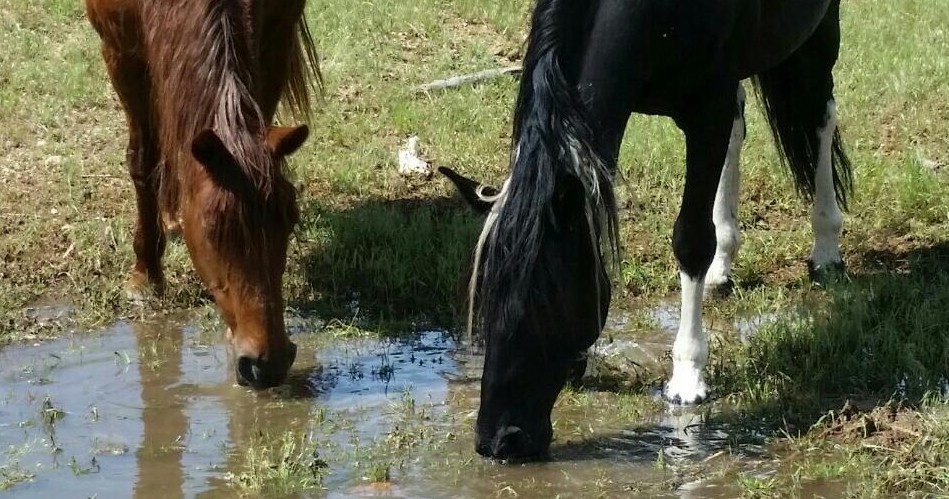
“My horse has foundered, what does that mean?” Laminitis (founder) is a lameness condition that is characterized by the loss of the normal attachment of the hoof to the coffin bone. There are a variety of causes for this disease including an episode of overeating in the grain room, hormonal causes, and as an after effect of high temperature or severe infection. Rarely it can be caused by damaged circulation from a wound or other loss of circulation. When the attachment of the hoof to the bone is damaged, the loss of attachment is usually most severe at the front of the hoof, which results in the most tearing at that point. On a radiograph from the side of the foot, it appears that the tip of the coffin bone has rotated downward, creating the classic x-ray image of a foundered foot. Traditionally, severity has been assessed by the number of degrees of difference between the front of the coffin bone and the hoof wall, termed degrees of rotation. The more rotation, the worse the laminitis episode is thought to be, and the less likely the horse will return to normal. Occasionally, the damage to the attachment is so severe that the entire hoof becomes detached from the bone, leading to the bone dropping straight downward with no rotation. These are termed “sinkers”, and the prognosis is much less favorable than a horse with a less severe amount of rotation.
Laminitis can be difficult to prevent. There are a number of metabolic events that occur when a horse develops laminitis. In some instances, like the grain overload situation, the horse consumes a large amount of grain and as it passes through his digestive system, the grains ferment, and toxins called endotoxins are released. These toxins alter blood flow to the foot, cause damage to the lining of the blood vessel in the laminae, and in that way damage the hoof attachment. Laminitis can also occur after a colic episode, and the endotoxin release from the GI disturbance is thought to have a similar effect. There are a number of stress related that are involved as well, with cortisone one of the most important. Horses that have a cresty neck and are obese are at increased risk for laminitis because of a direct adverse effect of insulin on the laminae. Horses with Equine Metabolic Syndrome have significantly elevated insulin levels continuously, and the effect of increased cortisone in the blood stream makes the insulin level climb higher. Eventually, a critical level is reached, the laminae are damaged, and a laminitis episode ensues. Horses that have PPID (Equine Cushings Disease) have persistently elevated cortisone levels in their bloodstream, which causes insulin resistance as well. Treatment of these conditions involve weight management, dietary changes, and medication to control the PPID if it is present.

